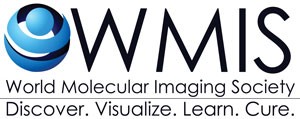Nanoparticles synthesized from metallic elements are typically classified as “hard” due to their rigid structure and in medical imaging, they serve as contrast agents—detectable with multiple modalities simultaneously—giving rise to new techniques for the ever-richer acquisition of molecular information. Metal nanoparticles can also act as radiosensitizers, enhancing the efficacy of radiotherapy, e.g., renally clearable ultrasmall gold nanoclusters with high tumor uptake. In addition, strategies for their synthesis often allow for precise control over size and shape, which determine in vivo behavior and pharmacokinetics. Among the first nanoparticle constructs to allow molecular imaging were superparamagnetic iron oxide nanoparticles (SPIONs), used for contrast generation with magnetic resonance imaging (MRI). Recently, nanoparticles labeled with radiotracers were found to be very promising—particularly in cancer imaging—in preclinical studies because of three major advantages: (1) the EPR effect; (2) high surface-to-volume ratio of the nanoparticles allowing high density radiolabeling either using chelators (such as DOTA), chelator-free strategies, or intrinsic labeling during synthesis; and (3) complementary multimodal imaging.
Advances in Particles and Polymers
Sanjiv Gambhir, Stanford University, California, USA
Talk Outline:
- Background on Nanoparticles
- Unique Solutions Provided by Nanoparticles
- Features of Nanoparticles
- Specific Pre-clinical Examples
- Clinical Studies
- Future Directions
Gadolinium-based nanoparticles for the treatment of glioblastoma by MRI-guided photodynamic therapy
Eloïse Thomas, University of Lyno, Villeurbanne, France
Talk Outline:
- Glioblastoma and PDT
- AGuIX nanoparticles
- Addition of a peptide (DKPPR)
Monoclonal Antibody Templated Gold Nanoclusters for Fluorescence Imaging of HER2 Receptors
Xin Zhang, Peking University, Beijing Shi, China
Talk Outline:
- Background: Gold nanoclusters and protein stabilized Au NCs
- Design and synthesis of Her-Au NCs
- Imaging of Her-Au NCs
DNA Origami assembled with QD655 and gold nanorod working as a novel nanoprobe for fluorescence and optoacoustic dual imaging modality in 4T1 mammary tumor model
Yang Du, Chinese Academy of Sciences, Beijing, China
Talk Outline:
- Background: Near Infrared Fluorescence Molecular Imaging
- DNA based nanostructures
- DNA Origami-Gold nanorod hybrids for OAI imaging
Image Guided Site-Selective Delivery of Novel Trimodal Optical/MR/X-ray Contrast Nanoconstructs for Colorectal Cancer Liver Metastasis Therapy
Abdul Parchur, Marquette University and Medical College of Wisconsin, Milwaukee, WI, USA
Talk Outline:
- Photothermal Ablation with Silica-Gold NPs
- Systemic vs Site-Specific Delivery
- Photothermal Therapy: Thermal Imaging
- Dyna-CT Imaging
